
 |
|
The American Expansion |
In 1803 land transaction known
as the Louisiana Purchase, France sold to the United States a
vast territory in central North America which included land that
later became the state of Kansas. At this time this area was
occupied by the Kaw, who were living in the Blue Earth
Village near where Manhattan stands today. Since the early1700s
the Kaws had associated with the French in the fur trade and
had become dependent on European trade goods.
|
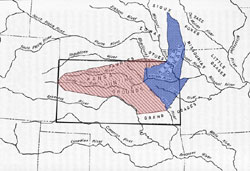
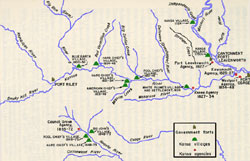 |
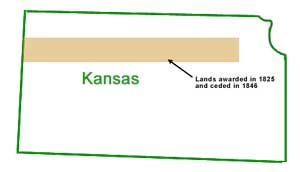
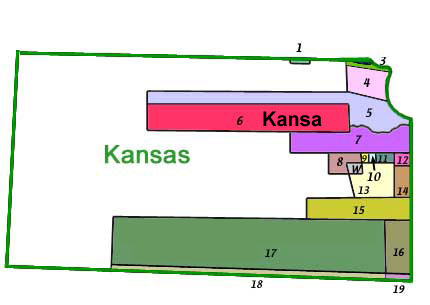 |
Explorers
Zebulon Pike in 1806 and Stephen Long in 1819 came to the
central plains and pronounced the land unfit for cultivation and
permanent white habitation. It was assumed at that time that the
plains were suitable only for Native Americans.
In the 1830s and
1840s over twenty tribes from the east coast and Ohio Valley
were relocated to reservations in what is now Kansas. Partially
to make room for these immigrant Indians, the U.S. government
constricted the domain of the Kaws in a series of legal
actions beginning with the Treaty of 1825.
|
|
Americans traveling on the Oregon and California Trail and the
Santa Fe Trail began to realize that, in fact, these prairies
were quite fertile and desirable as places of settlement. The
government followed suit by making plans to effect the
settlement of Americans into Indian Country. Soon after Kansas
becoming a territory in 1854, a series of treaties and legal
machinations, some of questionable integrity, rapidly
disenfranchised Indians from their Kansas lands. Most of these
Indians were moved south to "Indian Territory," now
Oklahoma.
|
 |
The Kaws
signed a treaty in 1846 which forced the tribe to give up
land in northeastern Kansas. Indian agent Richard Cummings then
selected a tract on the Neosho River as the new Kaw Reservation. It was twenty miles square and included the site of
present Council Grove.
|
|
When Kansas became
a territory, land-hungry Euro-Americans came by the thousands to
establish their land claims. Unfortunately, the Council Grove Kaw
Reservation was overrun by the whites. By 1859 nearly one
thousand Americans had settled illegally on the Kaw Reservation. Many of these people said they had been misled by
faulty maps and bad advice from Indian agents.
|
 |
In
1859 the federal government forced the Kaws to sign another
treaty which diminished their reservation to a tract nine by
fourteen miles. Council Grove was situated just north of this
new diminished Kaw reserve. However, the whites continued to
pressure the Kaws and by the early 1870s hundreds of settlers
had once again overrun the diminished Kaw Reservation.
|
|
In 1872 the
Secretary of the Interior of the U.S. government, Colombus
Delano, came to Council Grove to inform the Kaw that they
would be removed from Kansas once-and-for-all. Kaw chief
Al-le-ga-wa-ho made an impassioned plea to Delano with the
following words: "Great Father, you whites treat us Kan-zey
like a flock of turkeys, you chase us to one stream, then you
chase us to another stream, soon you will chase us over the
mountains and into the ocean." The chief’s appeal was
ignored, and in June 1873 the six hundred remaining Kaws were
removed south to a reservation in Indian Territory.
|
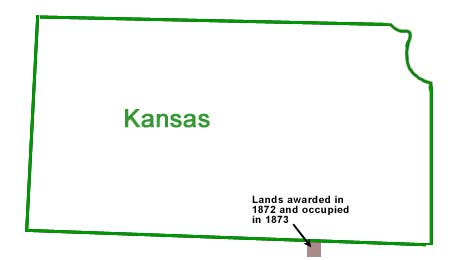
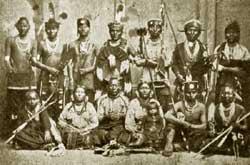 |
|
|


